Discus fish, with their vibrant colors and distinctive disc-shaped bodies, have earned the nickname “King of the Aquarium” for good reason. These mesmerizing freshwater fish transform any tank into a living work of art, commanding attention with their graceful movements and stunning appearance. Native to the Amazon River basin, these members of the Cichlid family have captivated aquarium enthusiasts worldwide, becoming coveted centerpieces in tropical aquariums. However, their beauty comes with significant responsibility—discus fish require precise water conditions, specialized diets, and consistent care that makes them a challenging choice for novice aquarists. This article explores everything you need to know about these magnificent but demanding aquatic pets, from their natural history to the detailed care requirements that make them both a rewarding and challenging species to maintain.
Natural Habitat and Origins

Discus fish (Symphysodon spp.) originate from the blackwater tributaries of the Amazon River basin, spanning across Brazil, Colombia, and Peru. In their natural environment, these waters are characterized by being slow-moving, warm, soft, and slightly acidic due to the decomposition of organic matter like fallen leaves and branches. The Amazon’s blackwater rivers have low mineral content but are rich in tannins, giving the water its distinctive tea-like coloration that provides natural protection for discus fish.
These conditions have shaped discus fish evolution, making them highly specialized to particular water parameters that aquarists must replicate. Understanding their natural habitat provides crucial insights into why these fish require such specific care in captivity and why they can be particularly sensitive to environmental changes.
Physical Characteristics and Varieties
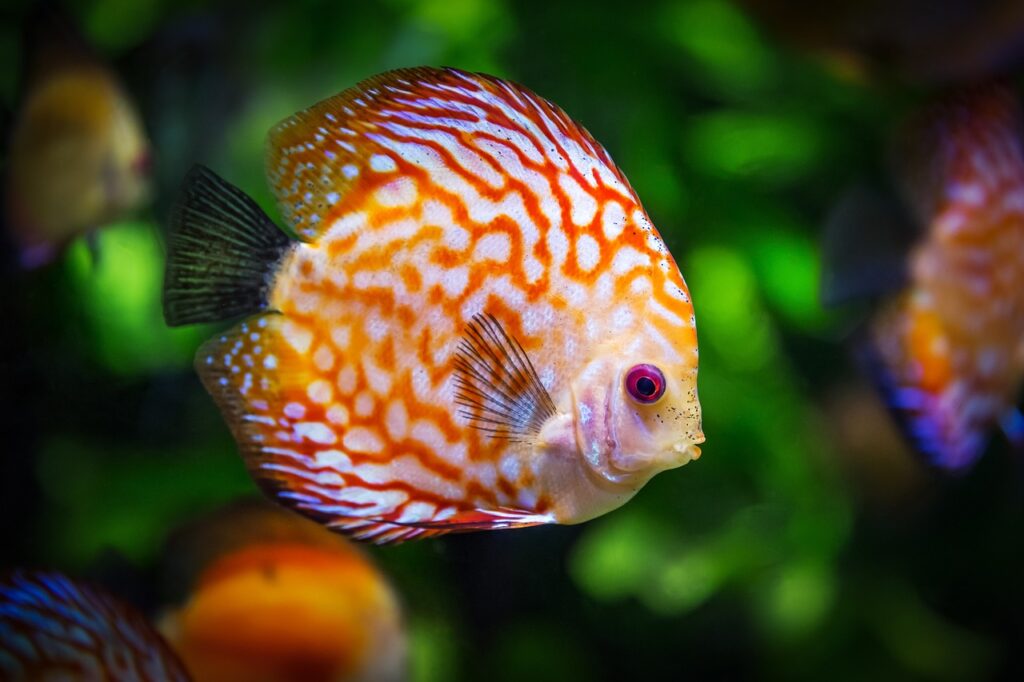
Discus fish are immediately recognizable by their laterally compressed, almost perfectly round disc-shaped bodies, which give them their common name. They typically grow to about 8-10 inches in diameter when properly cared for, making them substantial centerpiece fish in community aquariums. Their natural coloration includes various shades of green, red, and brown with distinctive vertical stripes, although decades of selective breeding have produced a stunning array of color variations including brilliant blues, reds, yellows, and patterns like pigeon blood, snake skin, and turquoise.
Their fins are equally impressive, with long, flowing dorsal and anal fins that extend gracefully as they swim. Wild discus variants (such as Heckel, Blue, Brown, and Green) display more subtle coloration suited for camouflage in their natural habitats, while cultivated strains showcase the vibrant hues that have made these fish so popular among enthusiasts.
Water Parameters: The Critical Factor

Maintaining proper water parameters is arguably the most challenging aspect of discus fish care and the primary reason they’re considered high-maintenance aquarium inhabitants. Discus thrive in water temperatures between 82-88°F (28-31°C), significantly warmer than most tropical community tanks, which typically operate at 76-80°F. The pH should be maintained between 6.0-7.0, with a preference toward the slightly acidic range of 6.0-6.5 to mimic their natural blackwater habitat.
Water hardness must be kept very soft, ideally between 1-4 dGH (degree of General Hardness), which often requires the use of RO (reverse osmosis) water or water softening systems in areas with hard tap water. Perhaps most demanding is their sensitivity to water quality—discus require pristine conditions with zero ammonia and nitrites, and minimal nitrates (under 10ppm), necessitating frequent water changes of 25-50% several times per week. These exacting requirements mean that successful discus keepers must be diligent with water testing and maintenance routines.
Tank Setup and Size Requirements
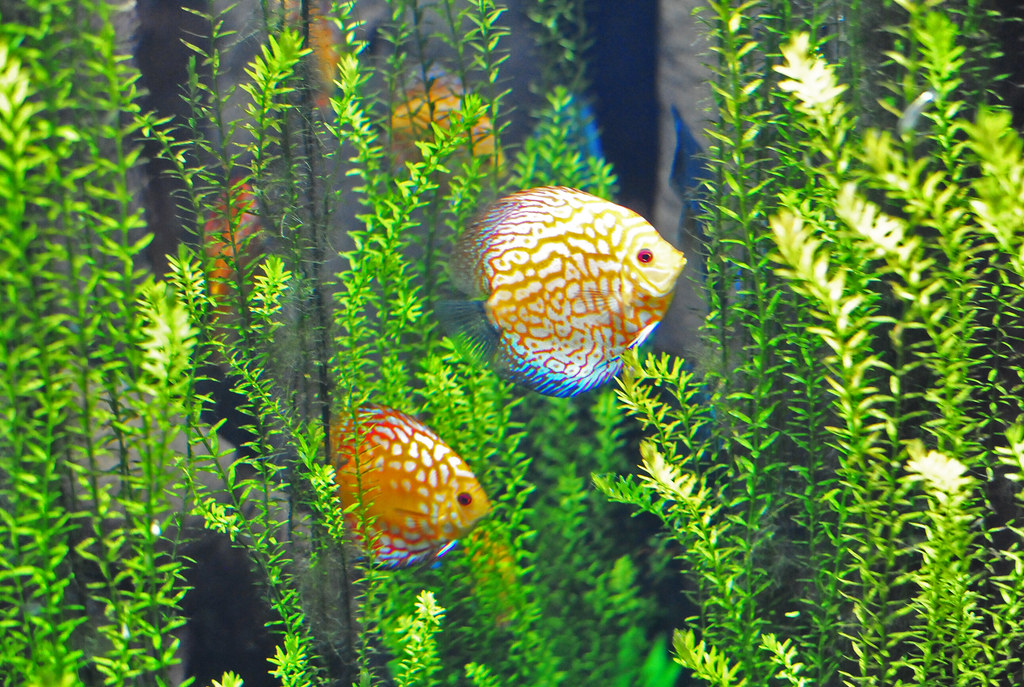
Creating an appropriate environment for discus fish starts with selecting an adequately sized aquarium, as these fish require substantial space to thrive. For a small group of adult discus (3-5 specimens), a minimum tank size of 75 gallons is recommended, with larger tanks of 100+ gallons being preferable for larger groups or mixed communities. The tank should be taller rather than longer to accommodate their vertical, disc-shaped bodies and natural swimming patterns.
Substrate choices should be carefully considered—fine sand or smooth gravel works well, but sharp substrates should be avoided as discus often feed near the bottom and could injure their delicate mouths. Décor should include vertical surfaces like driftwood or broad-leaved plants that provide hiding spots while not crowding swimming space. Filtration systems must be robust but create gentle water movement, as discus prefer calm waters similar to their natural habitat’s slow-moving streams.
Filtration and Water Change Requirements
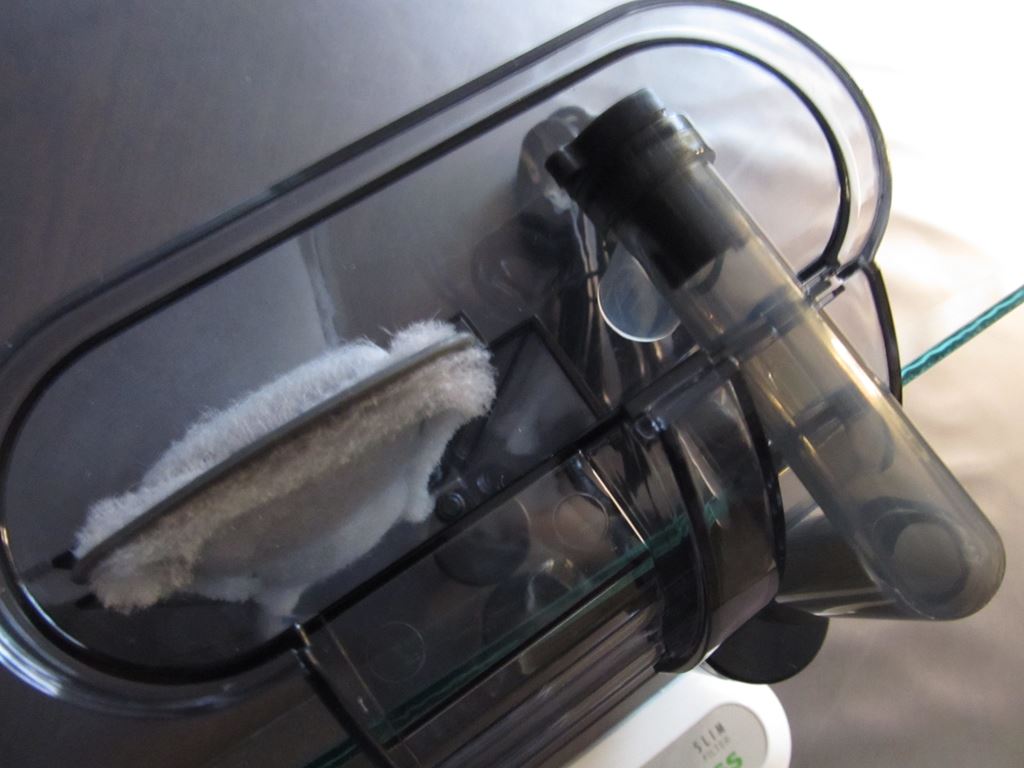
Exceptional filtration is non-negotiable for discus aquariums, as these fish produce significant waste and are extremely sensitive to poor water quality. A combination of mechanical, biological, and chemical filtration provides the best results, with canister filters often being the preferred choice due to their efficiency and customizable media options. The filter should turn over the tank volume at least 5-7 times per hour while creating gentle water movement rather than strong currents.
Despite excellent filtration, discus tanks require frequent water changes—typically 25-50% twice or three times weekly—to maintain pristine conditions and remove hormones that can inhibit growth. Many dedicated discus keepers implement automated water change systems to manage this demanding schedule. Each water change must be performed with pre-conditioned water matching the tank’s temperature and parameters exactly, as discus are notoriously sensitive to sudden changes in water conditions that can trigger stress, disease, or even mortality.
Diet and Feeding Requirements
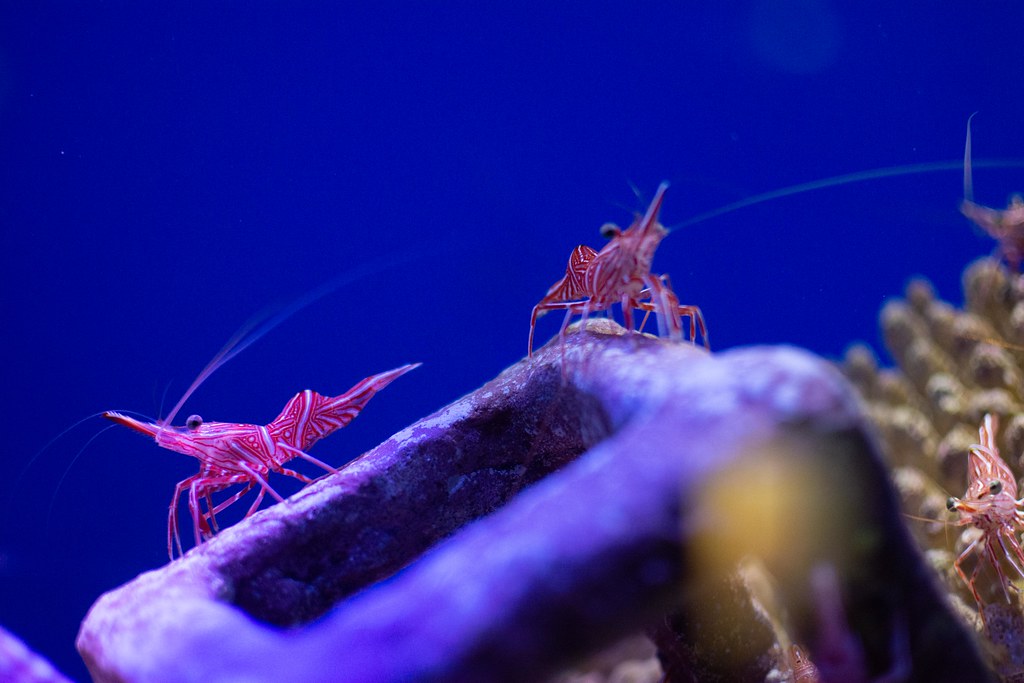
Discus fish are omnivores with specific nutritional needs that must be met through a varied and high-quality diet. In the wild, they consume small invertebrates, insect larvae, and plant matter, requiring a protein-rich diet in captivity. High-quality commercial discus foods formulated specifically for their needs serve as an excellent base diet, typically containing ingredients like beef heart, shrimp, and various vitamins and minerals essential for their health and coloration.
These should be supplemented with frozen foods such as bloodworms, brine shrimp, and daphnia to provide variety and additional nutrients. Live foods like blackworms can be offered as occasional treats but should be sourced from reputable suppliers to avoid introducing parasites. Feeding should occur 2-3 times daily with only as much food as they can consume within 2-3 minutes to prevent waste accumulation in the tank. Young discus require more frequent feedings—up to 5-6 times daily—to support their rapid growth phase and prevent stunting.
Social Behavior and Community Compatibility
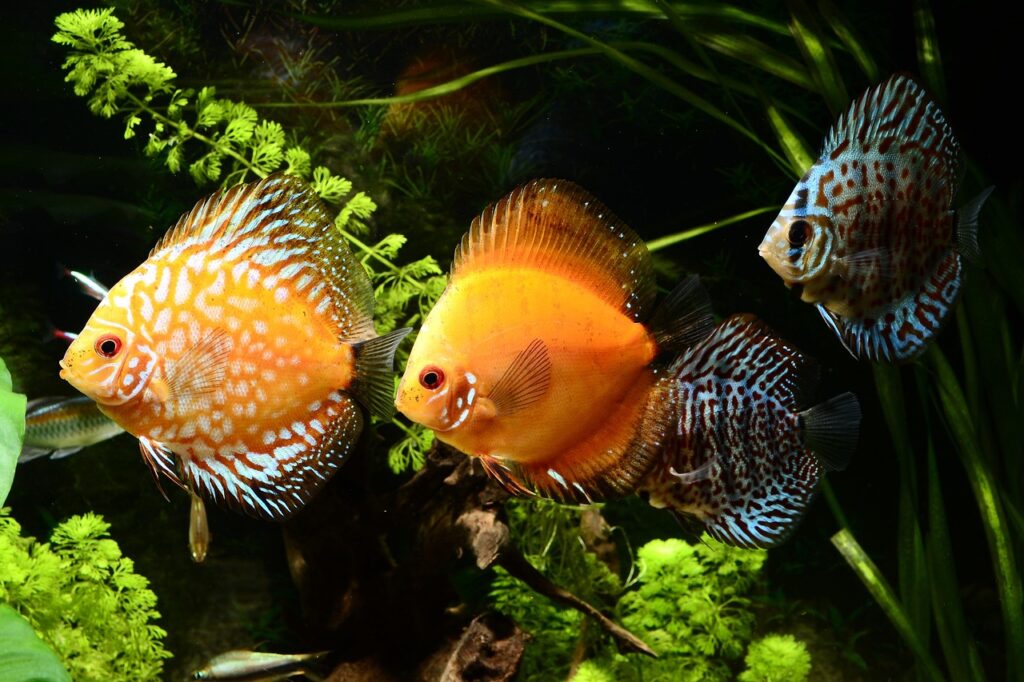
Discus fish are naturally social creatures that live in groups or shoals in the wild, making them stressed when kept solitarily in aquariums. A minimum group of five or six specimens is recommended to create a comfortable social hierarchy and reduce stress-related health problems. Within their groups, discus establish distinct pecking orders, with subtle body language and occasional fin-flaring serving as communication methods. While generally peaceful, they can become territorial during breeding, particularly when protecting eggs or young.
When considering community tank mates, compatibility depends primarily on shared water parameter requirements, as few fish tolerate the high temperatures discus need. Suitable companions include cardinal tetras, rummy-nose tetras, and certain peaceful cichlids like angelfish that naturally coexist with discus in the Amazon. Bottom-dwelling species like Corydoras catfish can work well but may need to be heat-tolerant varieties that can thrive in the elevated temperatures discus require.
Breeding Challenges and Parental Care

Breeding discus is considered one of the most challenging accomplishments in the freshwater aquarium hobby, requiring perfect water conditions and significant experience. Mature pairs typically form monogamous bonds and will clean a vertical surface—often a broad leaf, piece of slate, or the tank glass—before the female deposits hundreds of adhesive eggs. Unlike many fish species, discus exhibit remarkable parental care, with both parents guarding the eggs and taking turns fanning them to provide oxygen and prevent fungal growth.
After hatching (usually within 50-60 hours), the most fascinating aspect of discus parenting begins—the parents produce a special mucus secretion on their bodies that serves as the primary food source for the newly free-swimming fry, who feed directly from their parents’ sides. This unique feeding behavior continues for several weeks until the young are large enough to accept prepared foods, making the entire breeding process labor-intensive and requiring dedicated breeding tanks with meticulously maintained water conditions.
Common Health Issues and Prevention
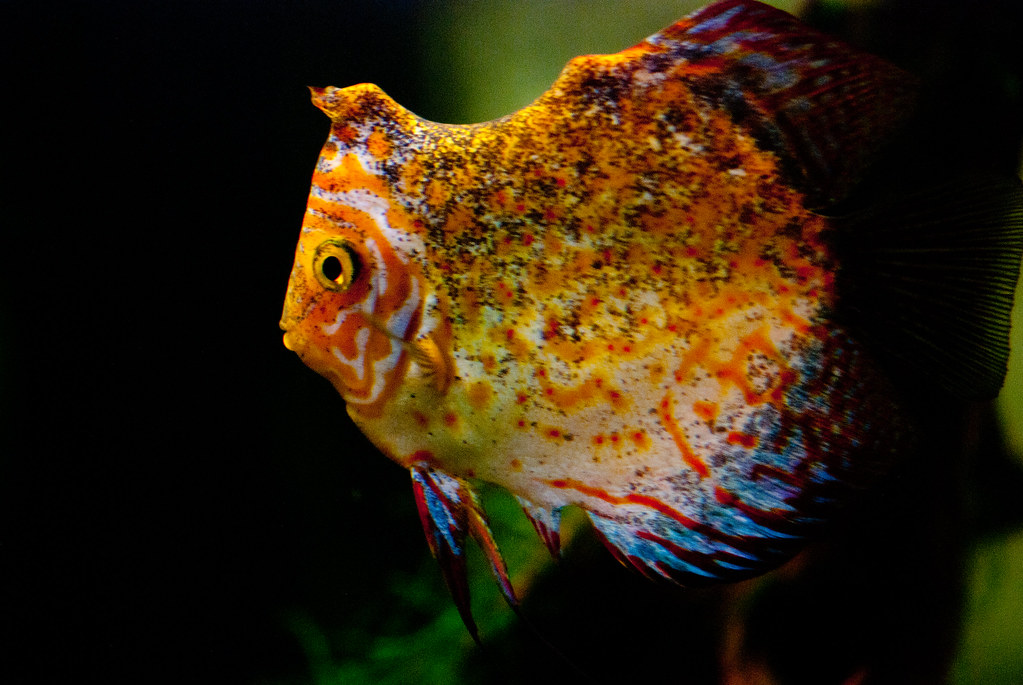
Discus fish are susceptible to several health issues, with their sensitivity to water quality making preventative care essential. The most common problems include intestinal parasites like Hexamita (also known as “hole in the head disease”), which presents as lesions on the head and body and requires prompt treatment with medications like metronidazole. Skin flukes and gill flukes can also affect discus, causing excessive mucus production, scratching behavior, and respiratory distress, typically treated with praziquantel-based medications.
Perhaps the most prevalent issue is discus plague (Discus Plague Virus or DPV), a highly contagious viral infection with no known cure that underscores the importance of quarantining new specimens before introducing them to an established tank. Preventative measures include maintaining impeccable water quality, providing a stress-free environment, quarantining new arrivals for at least 3-4 weeks, and implementing regular tank maintenance routines.
Cost Considerations for Discus Keeping

The financial investment required for discus keeping extends well beyond the initial purchase price of the fish themselves. Quality juvenile discus typically start at $30-50 each, with premium specimens of rare coloration or championship bloodlines commanding prices of $100-300 or more per fish. The setup costs are equally substantial—a properly equipped 75-gallon aquarium with adequate filtration, heating, and testing equipment can easily exceed $1,000.
Ongoing expenses include high electricity consumption from maintaining elevated water temperatures, specialized foods costing $20-30 monthly, and potential investment in water treatment systems like reverse osmosis units ($150-300) for areas with unsuitable tap water. Many dedicated discus keepers also install automated water change systems ($200-500) to manage the frequent water changes these fish require. When considering these factors, prospective discus owners should budget for initial setup costs of $1,500-2,500 and ongoing monthly expenses of $50-100 for optimal care.
Selecting Healthy Specimens
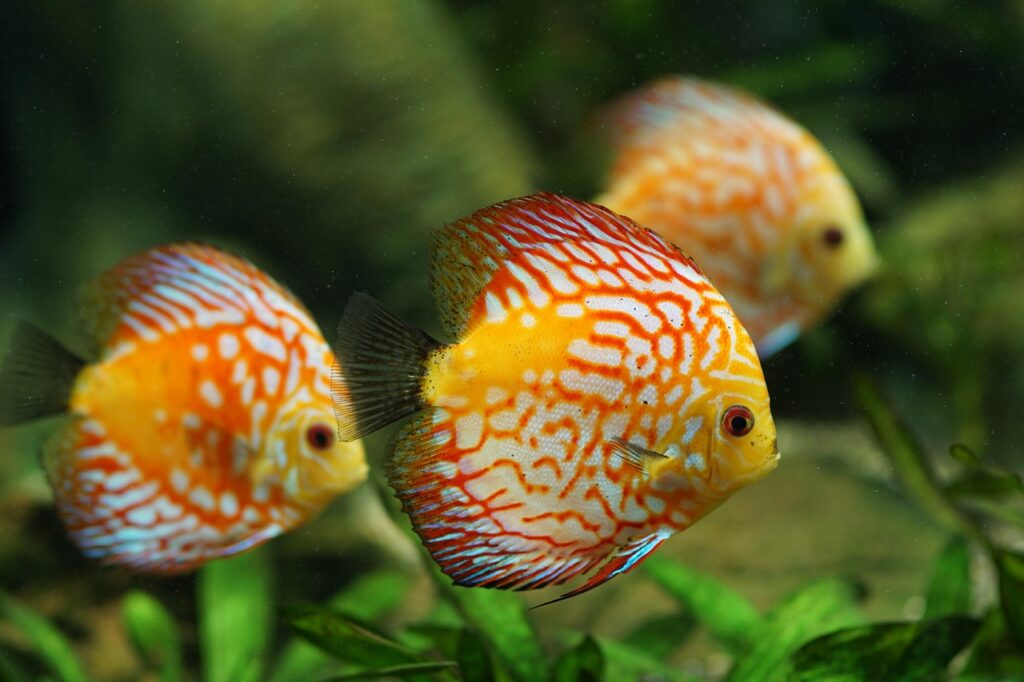
Choosing healthy discus specimens is crucial for success, as unhealthy fish rarely recover fully in home aquariums. When selecting discus, look for specimens with rounded, full bodies without any pinched areas near the head, which can indicate parasitic infections or malnutrition. Healthy discus should have clear, bright eyes without cloudiness, and their fins should be erect without clamping, tearing, or obvious damage.
Observe their breathing pattern, which should be steady and not rapid or labored. Color intensity can be a good indicator of health, though this varies by strain—what’s most important is that coloration appears even without patchy areas or excessive mucus. Avoid fish showing signs of skittishness, hiding behavior, or those that refuse food when offered. Purchasing from reputable breeders or specialty shops rather than general pet stores typically provides healthier specimens with better genetic backgrounds, even if the initial cost is higher.
Time Commitment: The Hidden Challenge

Perhaps the most overlooked aspect of discus keeping is the substantial time commitment required for their proper care. Daily tasks include multiple feedings, water parameter testing, equipment checks, and observation of fish behavior to catch potential problems early. Weekly maintenance typically involves multiple water changes (2-3 times per week), each requiring preparation of replacement water with precisely matched parameters, filter cleaning, substrate vacuuming, and glass cleaning.
Monthly deep maintenance might include thorough filter media replacement schedules, equipment cleaning, and more comprehensive water testing for parameters like GH, KH, and TDS (Total Dissolved Solids). Vacations become particularly challenging for discus keepers, as finding qualified fish sitters familiar with the exacting requirements of discus care can be difficult. Many serious enthusiasts install automated feeding systems and water change equipment, but these require regular monitoring and adjustment to function properly.
Is Discus Keeping Right for You?
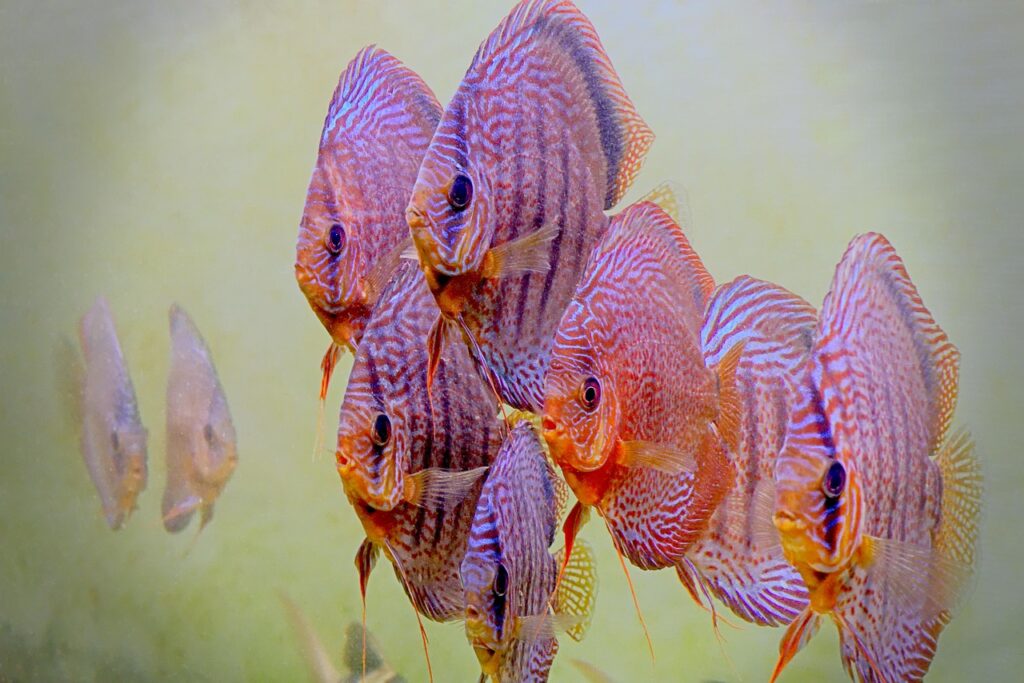
Before embarking on discus keeping, honest self-assessment regarding your experience level, available time, and commitment is essential. Discus are not recommended for beginners or those seeking low-maintenance pets, as they require consistent, knowledgeable care and substantial resources. Successful discus keepers typically have several years of experience with other tropical fish, particularly cichlids, and understand the nitrogen cycle, water chemistry, and disease management fundamentals.
The ideal discus keeper has a genuine interest in aquarium science, enjoys the routine of aquarium maintenance, and can dedicate daily attention to their tank. Financial considerations are equally important—budget constraints that might lead to cutting corners on equipment, water changes, or food quality will inevitably result in stressed, unhealthy fish. For those with the necessary experience, time, and resources, however, discus keeping offers incomparable rewards through the beauty, behavior, and unique challenges these magnificent fish present.
Discus fish truly embody the adage that beauty often requires dedication and commitment. Their stunning colors, unique disc-shaped bodies, and fascinating behaviors make them living jewels in the aquarium hobby. However, their demanding care requirements—precise water parameters, frequent maintenance, specialized diets, and considerable financial investment—mean they remain best suited for experienced aquarists willing to provide the meticulous attention they require.
For those prepared to meet these challenges, discus fish offer unparalleled rewards: the satisfaction of successfully keeping one of aquarium hobby’s most prestigious species, the opportunity to observe their complex social behaviors, and the daily pleasure of witnessing their extraordinary beauty. While certainly not for everyone, these magnificent Amazonian cichlids continue to captivate dedicated enthusiasts who understand that their high maintenance needs are simply the price of perfection.

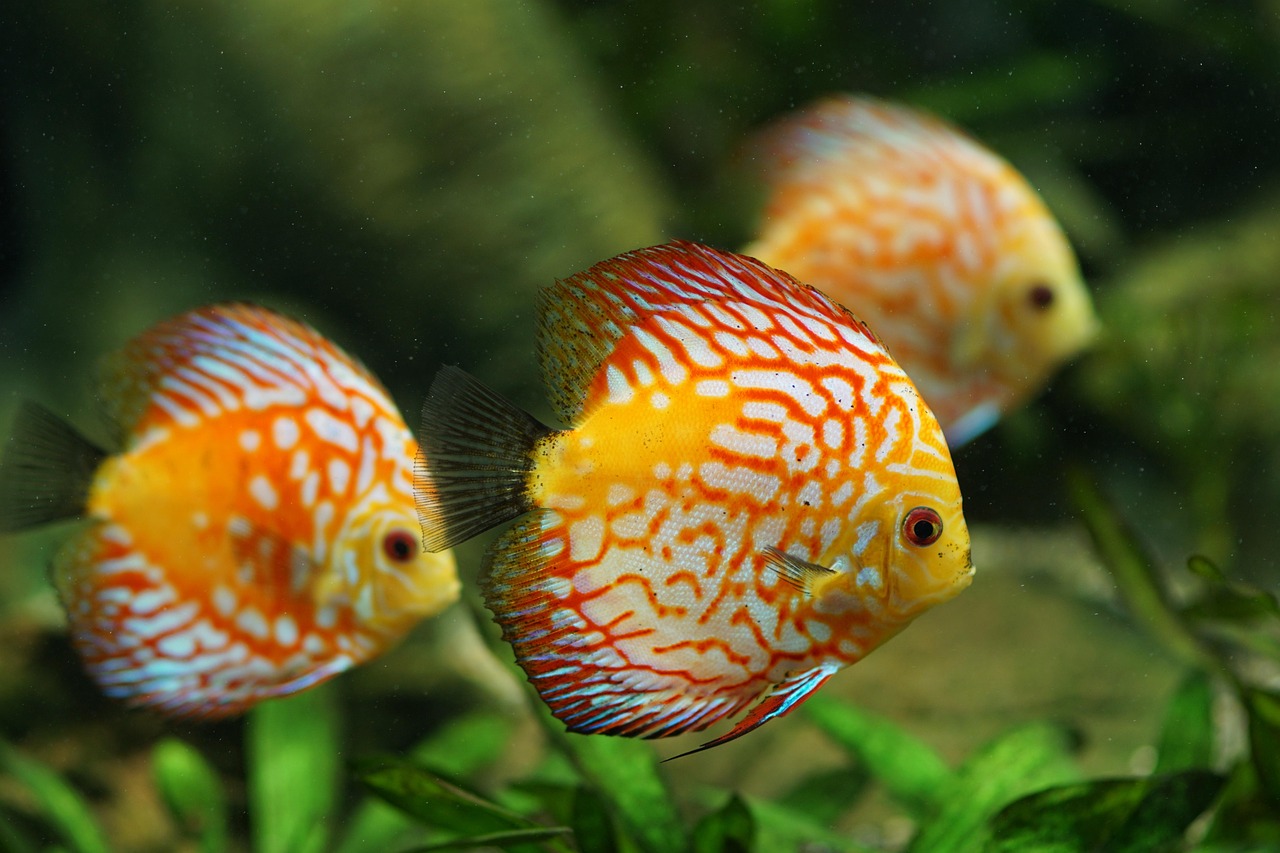

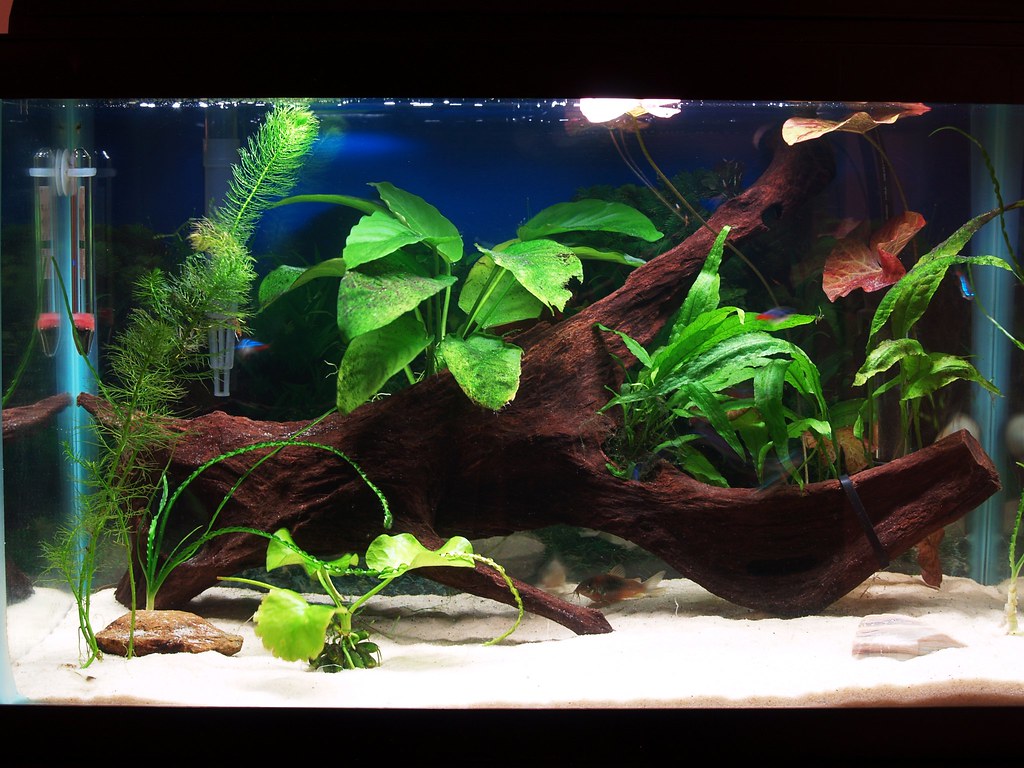
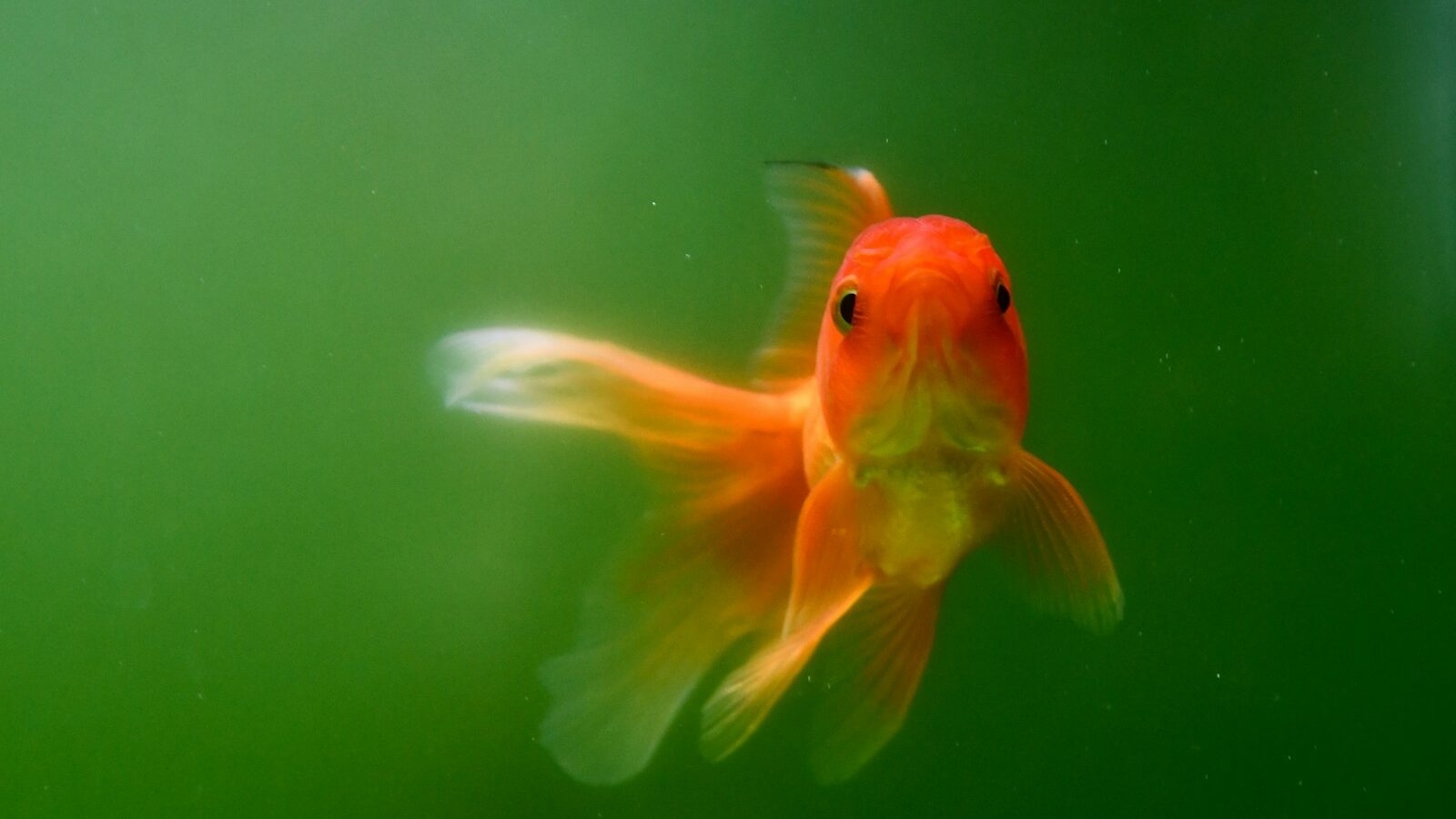
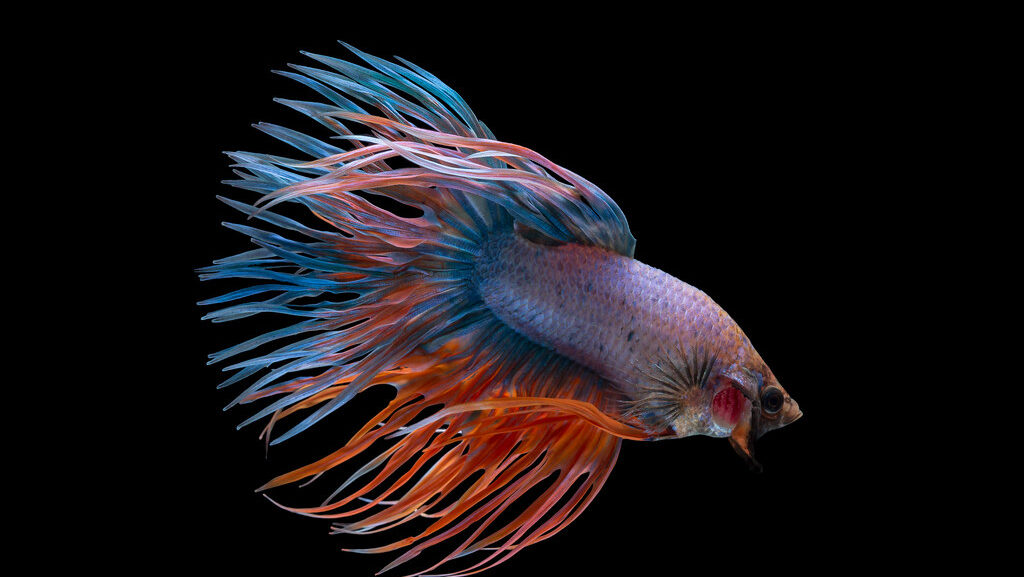
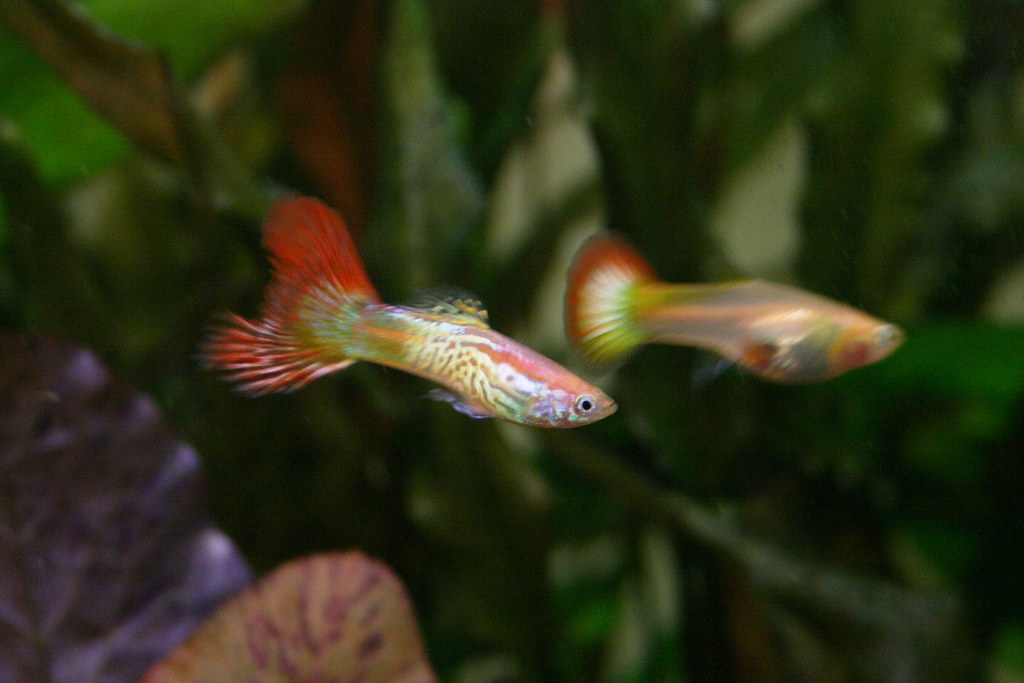
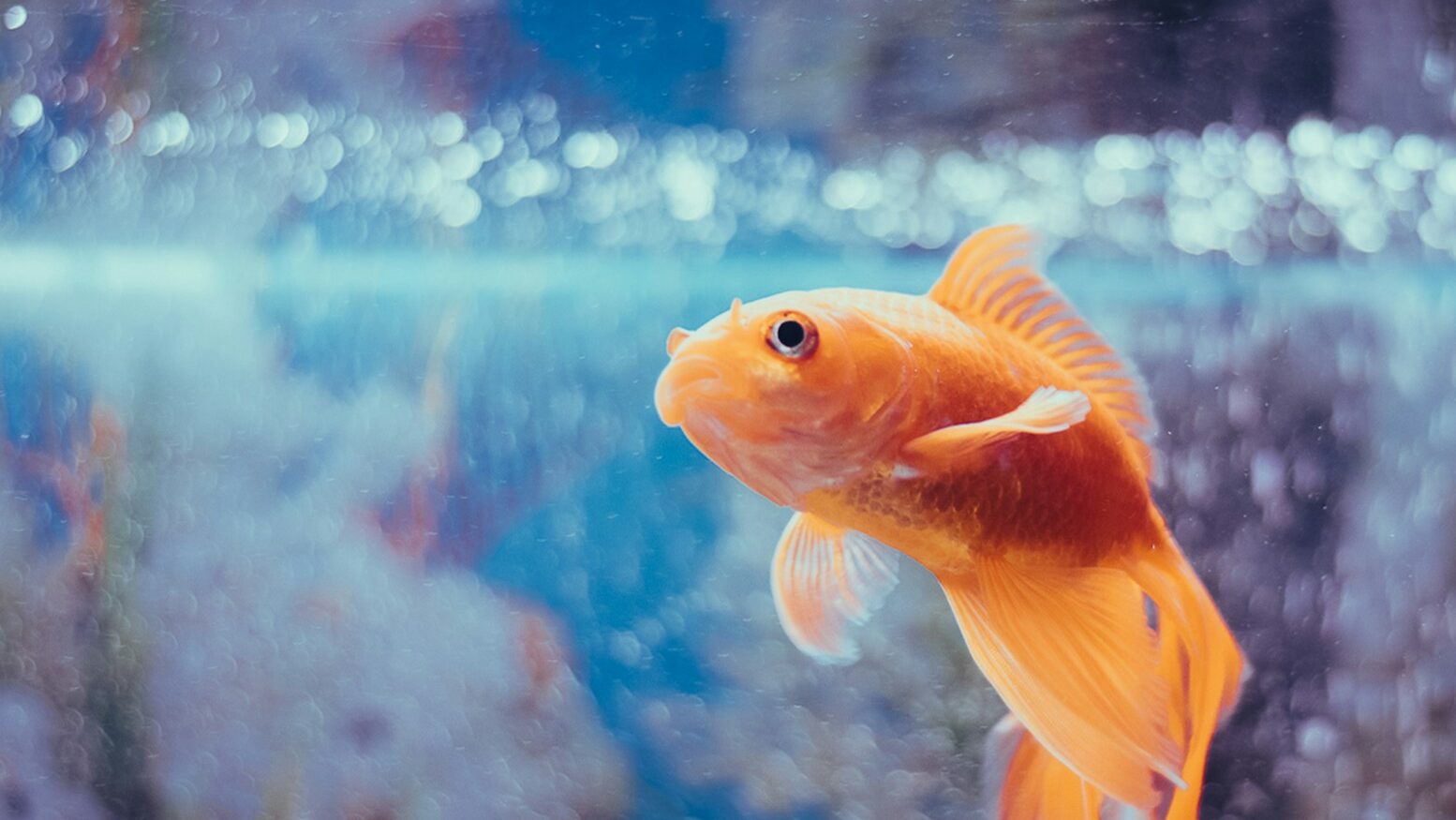
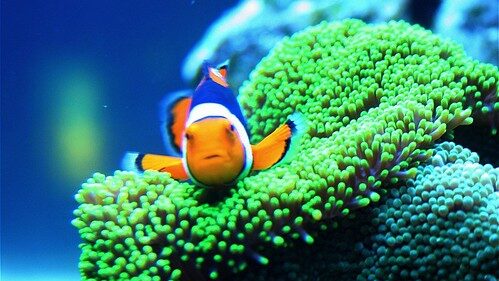



Leave a Reply